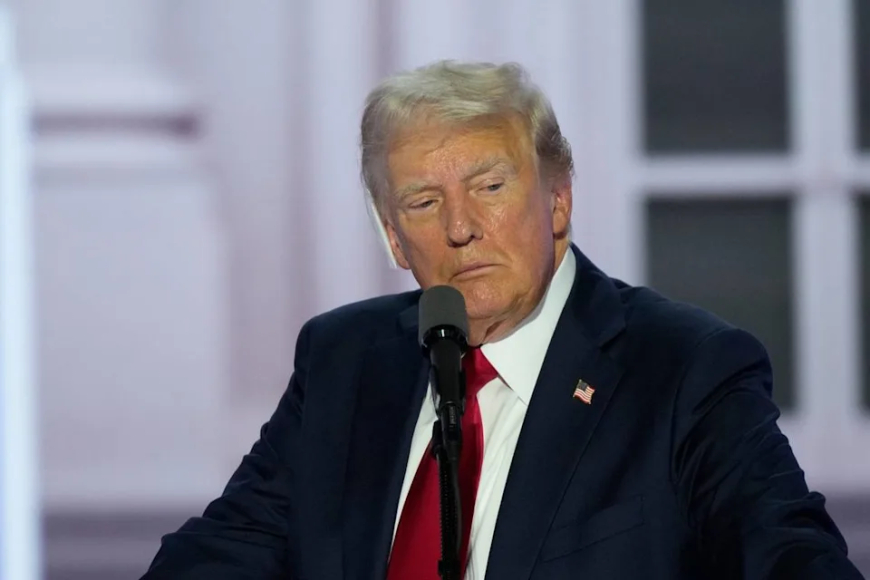Trump's Revenge Agenda: How a Federal Shake-Up Is Reshaping Agencies and Touching Everyday Lives
Donald Trump’s revenge agenda is reshaping federal agencies through firings and restructuring. Exclusive interviews and data reveal the personal and national impacts of these changes.

When Donald Trump returned to the White House on January 20, 2025, he carried with him not just promises of economic revival and national strength but also a pointed agenda: restructuring federal agencies in what insiders describe as an act of “bureaucratic revenge.” Over the past seven months, this agenda has not only led to the removal of dozens of senior officials but also altered the lives of everyday Americans who depend on government programs.
This story is less about political soundbites and more about the unseen gears of governance—the mid-level civil servants, the field officers, and the local administrators now grappling with sweeping changes. Through exclusive interviews with former agency employees and cross-referencing with policy data since the inauguration, a portrait emerges of how this political reset is reshaping America in real time.
The Scope of the Shake-Up
Since February 2025, several agencies have reported unprecedented staff turnover. The Environmental Protection Agency (EPA) saw the departure of more than 120 employees in regional offices, according to public records. Many were mid-career scientists and compliance officers who had spent decades monitoring air and water standards.
“People think these agencies are faceless machines, but they’re held together by individuals who have been in the field for 15, 20 years,” explained Sarah Whitmore, a former compliance specialist from the EPA’s Denver office. “When they’re suddenly gone, the communities lose institutional memory.”
Similarly, the Department of Education experienced abrupt reorganizations. By March 2025, 15 directors of state outreach programs were reassigned or dismissed. This has slowed funding reviews for rural school districts in states like Kentucky and West Virginia.
Stories from Inside the Agencies
The real impact of Trump’s revenge agenda lies not in Washington, but in the ripple effects across small towns and local offices.
-
Case 1: The USDA Inspector in Iowa
Mark Jensen, who spent 14 years as a food safety inspector with the USDA, told us his office went from seven inspectors to four in less than two months. “We’re stretched thin. It means slower inspections, delayed reports, and in some cases, shipments held at the border for weeks.” -
Case 2: A Single Mother in Arizona
Maria Gutierrez, a single mother of two, had her housing assistance application delayed after local HUD offices underwent staffing changes in April. “They told me the paperwork is backlogged because staff were reassigned. It’s not political for me. It’s about whether my kids have a roof over their heads.”
These stories highlight the direct human consequences of what many describe as Trump’s retaliatory reshaping of government.
Data Tells a Parallel Story
Beyond the anecdotes, the numbers show patterns. A review of staffing data compiled by Brookings Institution reveals that mid-level attrition in federal agencies has spiked 37% since January. That is nearly double the rate seen during Trump’s first term.
Policy analysis from the Government Accountability Office further underscores how these shifts translate into program delays, funding bottlenecks, and even weakened oversight in industries like healthcare, energy, and transportation.
Why “Revenge” Matters in Governance
The term “revenge agenda” may sound like political theater, but insiders argue it captures a deeper philosophy. During the campaign trail, Trump often vowed to “drain the swamp” and “cut out the deep state.” Critics say the current moves go beyond reform and resemble retribution against agencies or officials perceived as disloyal during his first term.
“Some of these firings were not about performance but about loyalty tests,” said a former Department of Justice attorney who requested anonymity. “The message is clear: toe the line or be replaced.”
What It Means for Everyday Americans
For the average citizen, the shake-up is felt not in Washington headlines but in the small frustrations of daily life. Delays in passport processing, longer waits for small business loan approvals, and slower environmental permit reviews are just a few examples reported since spring 2025.
Yet, Trump’s supporters argue these disruptions are temporary pains in service of a leaner, more efficient government. They highlight reduced spending in certain agencies and a renewed emphasis on local governance as signs of progress.
The question remains: will these cuts and restructurings leave federal agencies permanently weakened, or will they rebound with a more streamlined focus?
Looking Ahead
With Congress set to reconvene on September 9, 2025, debates over federal staffing will take center stage. Bipartisan lawmakers are already preparing hearings on whether Trump’s agenda is undermining the stability of federal institutions.
For now, Americans remain caught in the middle—whether it’s a farmer waiting on crop subsidies, a teacher applying for federal grants, or a retiree expecting timely Social Security updates. The revenge agenda has made one thing clear: government might feel distant, but when its gears grind to a halt, the effects are deeply personal.











